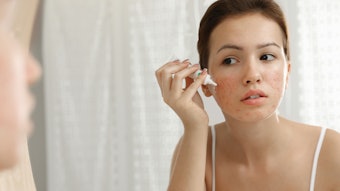
Measuring Attractiveness in Asian Eyes
The eyes are said to be the windows to the soul, which explains our aesthetic interest in them and why people generally assess a person's eyes first when considering the attractiveness of their face. However, the ideal measurements that determine attractiveness in Caucasian eyes don’t necessarily translate when considering eye attractiveness in other ethnicities.
Related: Alternative Filler Injection Technique for Lower Eyelid Rejuvenation
Latest Study
A study published in Plastic and Reconstructive Surgery (November 2022) by Anooj A. Patel, M.D., et al., attempted to define what anthropometric measurements determine attractiveness in Asian eyes. The complexity of the Asian eye combined with the high number of Asian eyelid procedures performed to cosmetically enhance eye attractiveness begs the question of what the ideal measurements of Asian eyes are associated with attractiveness. Researchers collected 322 right eye photographs of young East Asia women, which they evaluated for attractiveness using a Likert scale ranging from 1 to 5. To identify what features are most important to contributing to the overall attractiveness of Asian eyes, researchers collected 37 anthropometric measurements from images of the most and least attractive eyes.
Results
After evaluating the photographs, a total of 66 eyes were given median scores of ≥4.0, placing them in the attractive cohort, while the unattractive cohort included 43 eyes that received a score of ≤2.0. The attractive eyes exhibited a more lateralized superior brow peak compared to the upper lid crease and upper lash line peaks, as well as a greater palpebral aperture height–to–upper lid show ratio than the unattractive eyes. In addition, attractive eyes demonstrated an average ratio of 1.58 ± 0.32 at the midpupillary line, while the unattractive eyes had an average ratio of 1.22 ± 0.43. The authors found that a convergence of the upper lid crease and the upper lash line in eyes increased the likelihood of them being considered unattractive (p < 0.001).
Related: Using Anatomy to Assess Periorbital Rejuvenation
Conclusion
The study concluded that specific anthropometric measurements were associated with attractiveness in East Asian eyes, resulting in different ideal measurements than those of Caucasian eyes. This suggests that defining attractiveness is dependent on ethnic variabilities in features, requiring surgical treatments to be appropriately tailored to those variabilities.











